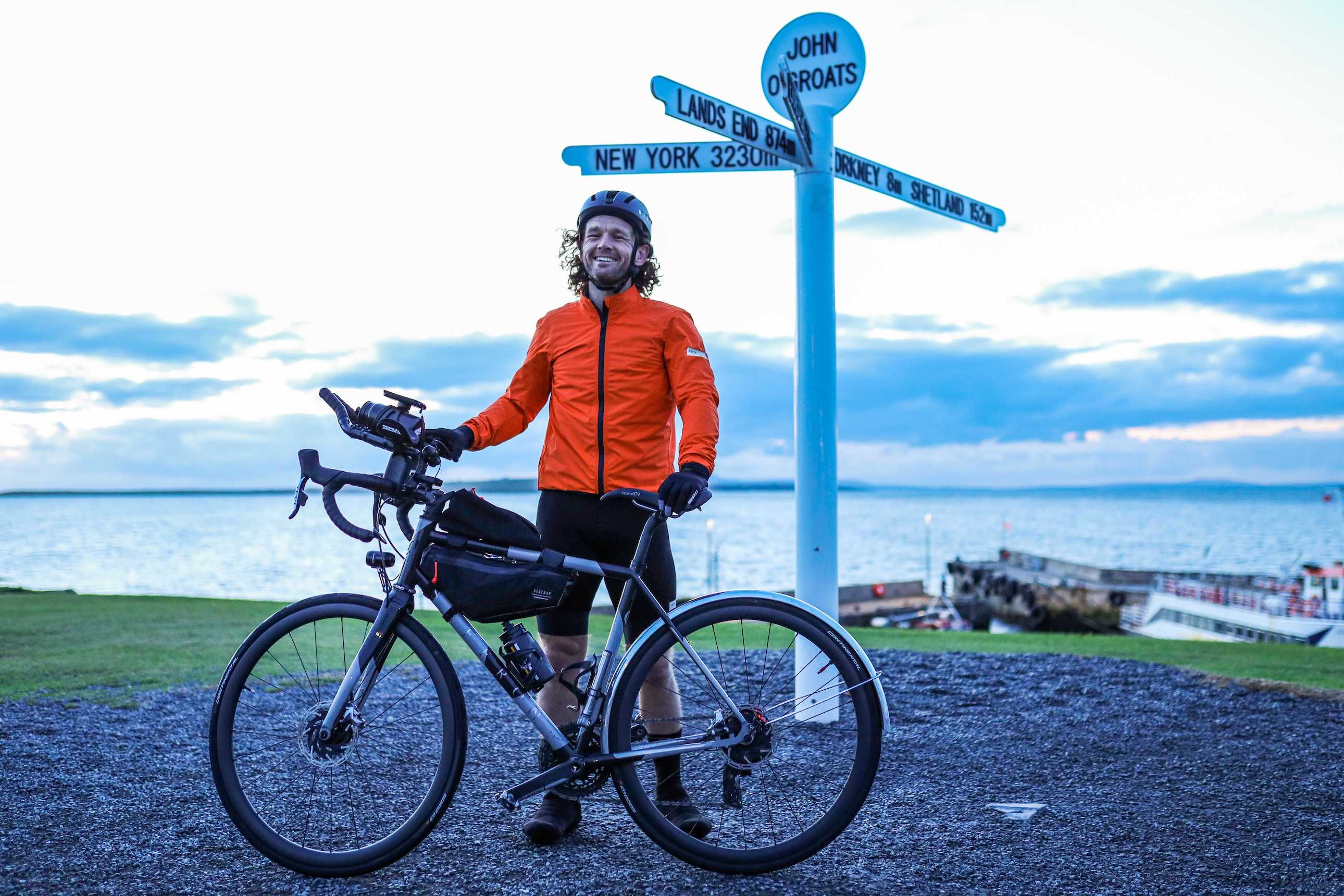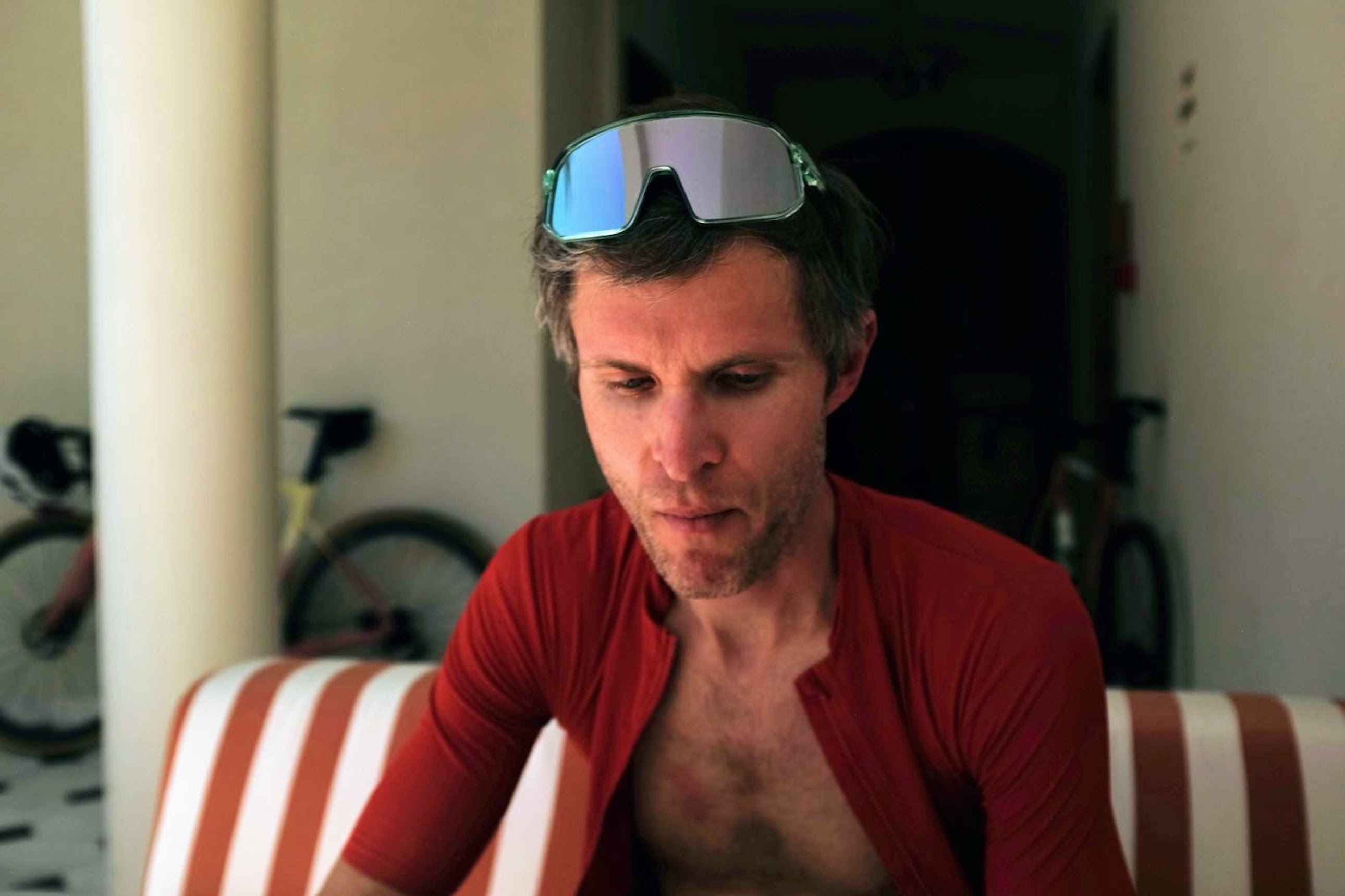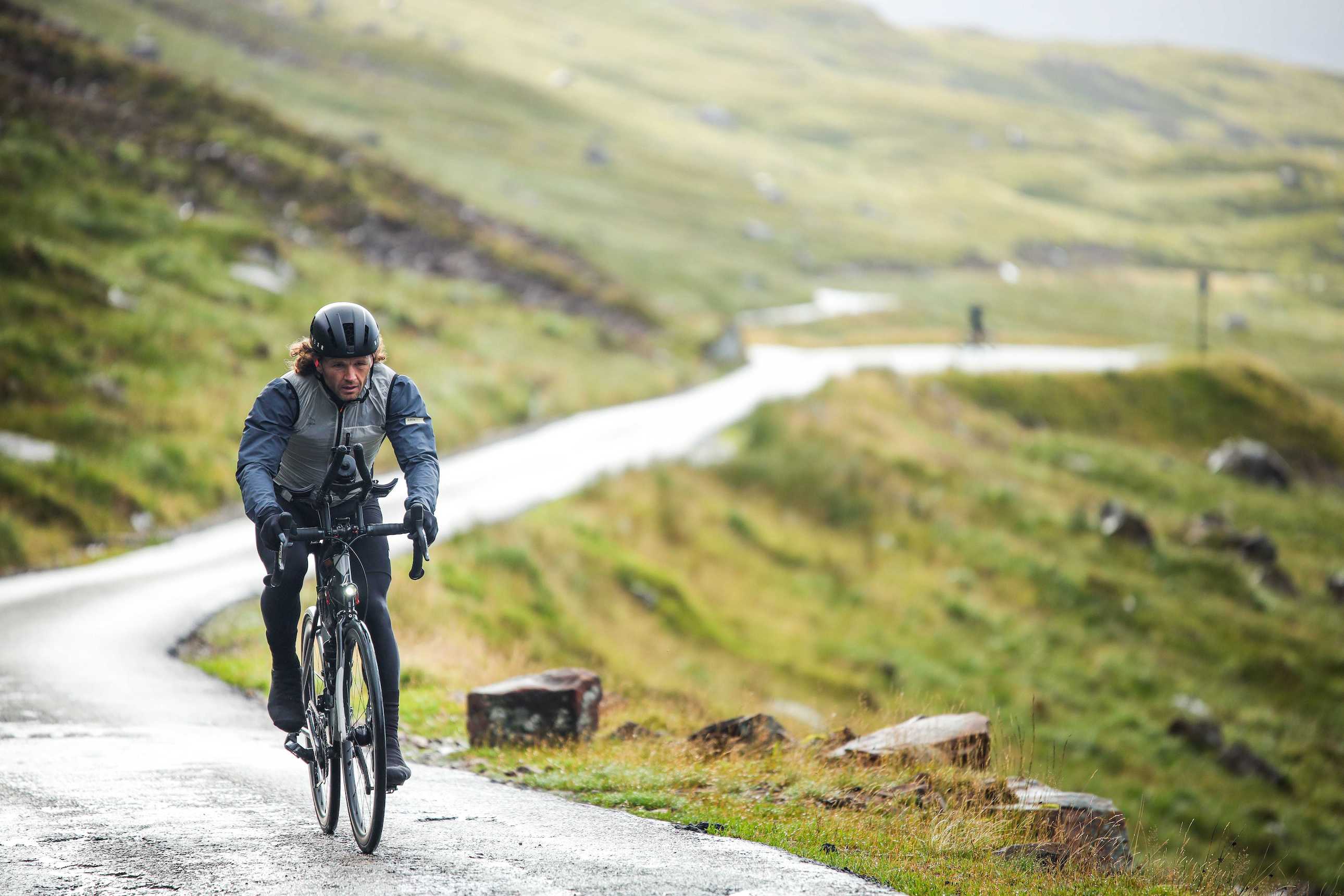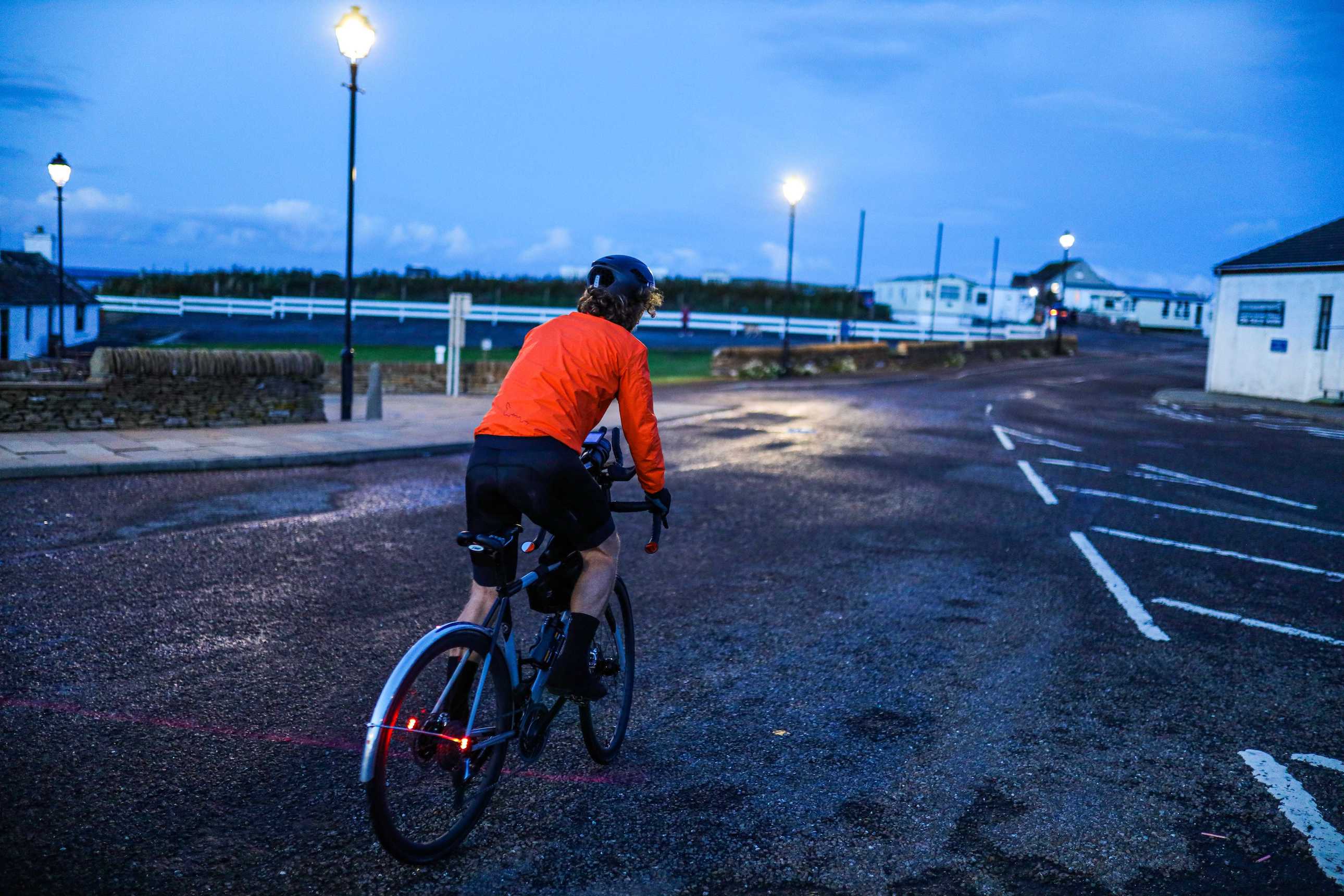'I literally couldn't sit down': The visually impaired rider who took on the British coastline record
Hungry for a journey of self discovery, Gavin Towers cycled the entire perimeter of mainland Britain


“When I was racing, I’d miss a turn or make a strange mistake. I remember once doing a race in France and getting eight punctures – clearly, in hindsight, I just wasn’t seeing stuff.” Gavin Towers is reliving his late teens as a highly competitive triathlete, usually at the sharp end of races but too often derailed by inexplicable errors. The dawning realisation he describes – past blunders suddenly making sense – is only too familiar to me: Towers and I have the same eye condition, retinitis pigmentosa (RP).
Caused by an inherited genetic glitch, RP slowly kills off the specialised cells of the retina, the part of the eye responsible for turning light into visual signals that the brain can convert into images. The early symptoms include failing to spot objects (e.g. road debris) in peripheral vision during daylight, and Chaplin-esque clumsiness anywhere dark or dimly lit. I was diagnosed about 15 years ago, aged 24, after knocking over one too many barstools; for Towers the moment came 10 years ago when, aged 34, he went for laser treatment to correct his short-sightedness. “They did the initial tests and came back with a look of horror on their faces,” he laughs.
Towers is now 44 and married with two children. Last year he cycled with his 10-year-old daughter Evangeline from Land’s End to John o’ Groats in just 22 days. The father-daughter training had felt important for reasons Towers had not admitted at the time. “If I’m being totally honest, I was lacking the confidence to ride by myself, so I’d ask her to come on rides with me – and together, bit by bit, we built up the distances.” Witnessing his young daughter’s tenacity in completing the 900-mile adventure was a humbling experience for Towers. “I realised I was in danger of doing that thing too many parents do: asking my children to achieve what, deep down, I needed to achieve myself.” There was only one thing for it.
Mind and body
With his background in triathlon, and having later reached international level in visually-impaired judo, Towers knew he had the strength of body and mind to target a major endurance record. The one that captured his imagination was the Guinness world record for fastest ride around the coast of Great Britain: 4,800 miles in 22 days, set by Nick Sanders in 1984 (see box). “To beat it, I knew I’d have to average 230 miles a day,” says Towers.
Over the next six months, he recruited a support crew, consulted a coach, and pieced together a plan. From midwinter 2020, his training began in earnest, squeezing in rides around his work as managing director of a family company developing tourist accommodation. “I was doing 17-24 hours’ riding a week, including one long ride of four to six hours – as much as I could, realistically.” He was fully aware it would be impossible to replicate the requirements of the record, but leaping into the unknown was, in a way, the point. “As you know,” says Towers, “as soon as someone with RP like you or me steps out of a familiar space, it’s a step, or a pedal stroke, into the completely unknown. You have to accept, this is either going to be OK or it isn’t, so here goes.”
By midsummer, he was in the best cycling form of his adult life. With the route mapped, bike prepped and van loaded, Towers and his crew set off from his home in Millom, Cumbria on 8 August, to begin their clockwise loop of the perimeter of mainland Britain. Over the first two days, he hit his target mileage despite wet and windy weather. By the end of day four, however, he was in serious discomfort. “I don’t think we took the risk of saddle sores seriously enough,” he reflects, speaking to me by video call a week after getting home. “I literally couldn’t sit down.”

He spent a full day, 180 miles along the west coast of Scotland, standing up pedalling or coasting along perched sidesaddle. “The next day, I still couldn’t sit down, so we went to A&E.” The continuous hours of friction from rain-soaked fabrics had led to open wounds requiring treatment and dressing. “From that point on, I was taking pain relief and wearing two pairs of shorts all the time.” The hospital visit meant a whole day was lost; the record was slipping away, and by day seven Towers was 300 miles behind schedule. It was around this time I remember being shocked by a video he posted to Instagram, his face so swollen that his eyes peered out from tiny peepholes.“I was passing blood,” Towers recalls, “and my face was so puffy that Angela [Towers’s wife] said she couldn’t bear to look because it looked like I’d been in a fight. I had been in a fight – with myself, and neither of us had won!”
Get The Leadout Newsletter
The latest race content, interviews, features, reviews and expert buying guides, direct to your inbox!
By night, while desperate for sleep, he was drenched in sweat and continually needing to pee – further signs his body was in a state of panicked disequilibrium. Another problem impeding progress was that night riding was proving more difficult than Towers had anticipated. Knowing how poor my own night vision is, I’m perplexed: how come he hadn’t realised? “That’s just my mental approach: believing I can do anything, even if I’m quickly disproven,” he says, smiling at his own obstinacy. “Initially I thought, with the right amount of lighting, I’d be OK.” The extreme fatigue, combined with unfamiliar roads, soon restricted riding to daylight hours only. It was time to let go of record ambitions.
“You need a degree of romanticism and naivety and dreaming to even consider doing anything like this,” says Towers. “Equally there are points where you need to be realistic and accept that it’s just not possible anymore.” From this practical viewpoint, the objective remained the same: ride as far as possible every day within the limits of safety. From the second week onwards, he reduced riding time to around 10 hours per day, allowing more sleep and recovery. ”We got into a rhythm,” recalls Towers. “The intensity eased and it took some of the danger out of it.”

He arrived back in Millom – safe and still smiling despite saddle sores and scrapes – on 7 September. The 4,811-mile coastline epic had taken a full month, but the time barely mattered anymore. “I’m really pleased I managed to do it,” Towers states plainly, and I detect a hint of sadness. “Since I got back, I’m really missing being outside and living in the moment.” This is a feeling I know well: returning from a liberating experience back to the daily frustrations of sight loss. “I don’t think I’ve come to terms with anything, I have to be honest; I’m still angry at my eyes,” he adds.
The record holder: 'The devil's in the detail'
The British coastline record of 22 days has stood for 37 years. It was set in 1984 by Nick Sanders, 63, who is still completing long-distance motorcycle adventures
“Before doing long-distance rides, I was a semi-pro cyclist: I’d won national championships as a youth, and went on to ride with Paul Sherwen for the La Redoute-Motobecane team. When I got fed up with racing, at 23, I decided to turn to bicycle adventuring.
“In 1984 I’d decided to cycle around the world in 80 days to set a new Guinness world record, meaning I’d need to cover 170 miles a day. In order to prepare for that, I chose to ride around the coast of Britain. The first time, I rode it over the course of a few weeks; the second time, I did it in 22 days.
“When I hear of people having a go at it, I smile because I remember that I was a semi-pro cyclist who trained like crazy for six months around the coast before attempting it. Guy Martin attempted it [in 2016] but got Achilles tendonitis after four days and had to abandon. The devil’s in the detail – I got to know the course and what it was all about. Records are there to be broken, but you’ve almost got to be a professional cyclist to beat this one.”
This is no ‘triumph over adversity’ story, because Towers has no interest in sugarcoating the ride or his sight loss. When I follow up by email, he is even more candid. “It’s the parenting aspect I struggle with most: I hope I’m a good dad and do all I can, but still sometimes feel frustrated or sad that I won’t be able to do everything with them.” What more can a child ask than that their dad is doing his best? “I’ll keep trying to walk in the dark, jump on the trampoline and cycle into the unknown, carve pumpkins, make tea they won’t eat, clean up after them,” Towers continues, “and I’ll keep being that person for as long as possible.” The challenge for those of us with RP is learning to accept our narrowing field of vision to live fully within its confines and make the best of what we have left. “My approach to life needs to change and evolve with the deterioration of my sight,” accepts Towers. “I struggle with this but my personality is to push on. If I have taken anything from the ride, it is that taking things a little easier is necessary and, in the end, nicer too.”

Thank you for reading 20 articles this month* Join now for unlimited access
Enjoy your first month for just £1 / $1 / €1
*Read 5 free articles per month without a subscription

Join now for unlimited access
Try first month for just £1 / $1 / €1

David Bradford is features editor of Cycling Weekly (print edition). He has been writing and editing professionally for more than 15 years, and has published work in national newspapers and magazines including the Independent, the Guardian, the Times, the Irish Times, Vice.com and Runner’s World. Alongside his love of cycling, David is a long-distance runner with a marathon PB of two hours 28 minutes. Having been diagnosed with retinitis pigmentosa (RP) in 2006, he also writes about sight loss and hosts the podcast Ways of Not Seeing.
-
 'This is the marriage venue, no?': how one rider ran the whole gamut of hallucinations in a single race
'This is the marriage venue, no?': how one rider ran the whole gamut of hallucinations in a single raceKabir Rachure's first RAAM was a crazy experience in more ways than one, he tells Cycling Weekly's Going Long podcast
By James Shrubsall
-
 Full Tour of Britain Women route announced, taking place from North Yorkshire to Glasgow
Full Tour of Britain Women route announced, taking place from North Yorkshire to GlasgowBritish Cycling's Women's WorldTour four-stage race will take place in northern England and Scotland
By Tom Thewlis